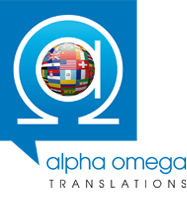In our most recent blog post, we discussed how medical translation services save lives. Obviously, patients must be able to communicate in their native languages to receive the highest quality healthcare. Outside of the medical context though, professional interpretation  services also save lives in less obvious, but no less important, ways.
services also save lives in less obvious, but no less important, ways.
According to the Bureau of Labor Statistics, Hispanic or Latino workers make up 27.3% of the U.S. workforce in construction. Other industries with high concentrations of Hispanic or Latino workers include agriculture (23.1%) and hospitality (22.3%). As the workforce becomes increasingly bilingual and diverse, employers will need to find innovative and effective ways to communicate with their staff.
This article discusses best practices for managing a bilingual workforce. Many of the below measures can make a significant difference. But there may be no substitute for professional interpretation services. At the least, making certain workers understand what is expected of them requires bringing in a trusted language partner at crucial points. Continue reading for tips on keeping your bilingual workforce safe and efficient.
Managing a Bilingual Workforce
While it’s not necessary for managers to be fluent in every language, it is important to make sure communications are clear and open for all. Strong communication gives workers the sense that you value them as part of your trusted team. In addition, taking the right precautions ensures success in critical areas, such as safety.
Numerous studies have found significantly higher occupational-injury rates among Hispanic and immigrant workers. And of the 991 U.S. private-sector, construction-related fatalities recorded in 2016, 29% involved Hispanic workers.
No doubt, employers and workers alike cite language barriers as one big obstacle to conveying safety information. But barriers to understanding many not be as simple as workers speaking a different language from management. The National Institute for Occupational Safety and Health (NIOSH) points to several contributing factors including:
- Immigrant workers’ unfamiliarity with certain tasks and safety procedures.
- Immigrant workers’ work styles differing from what their employer requires.
- Immigrant workers receiving little or no safety training.
Additionally, while workers may speak Spanish, they may have little formal education and their ability to read or comprehend Spanish in written form may be limited.
Learning how to better manage your bilingual workforce ensures your team that safety is a top priority. Focusing on areas such as developing skills and training will almost certainly require creating a set of best practices as the presence of Hispanic workers continues to rise.
What can business owners do to ensure the safety of their growing bilingual workforce?
Large corporations and unionized contractors have an advantage here. Being more closely scrutinized by OSHA and bound by safety-training regulations, they have fewer challenges managing bilingual workforces. With top-down systems and procedures in place, workers receive training from HR as a routine matter.
Still, large companies must do more than simply funneling workers through online training programs or in-person seminars with hundreds of participants. Look for opportunities to increase the number of multilingual speakers. Front-line supervisors should not be the only ones required to communicate in multiple languages. Support team members such as, HR, IT, engineering, and facility operations teams should be able to communicate in multiple languages as well.
Although small and midsize contactors have to create their own safety systems and procedures, this is no invitation to cut corners. With smaller jobs, the excuse that OSHA is less likely to show up on a jobsite can be a barrier to putting the right precautions in place. Too often, worker safety ends up taking a backseat to getting the job done.
Fortunately, small and midsized businesses do not need to choose between worker safety and profits. Professional interpretation services at an affordable price allow for both.
Best Practices for Overcoming Language Barriers
Regardless of the size of your business, OSHA’s Spanish Outreach training courses are the gold standard when it comes to construction safety training. They offer 10-hour or 30-hour training courses. If you go this route, bring in professional interpretation services to help trainers communicate during these important trainings. Contractors may also want to consider going a step further, however. Effective communication requires daily vigilance. The following tips give you a place to start:
- Choose the best English speaker among non-English speaking employees to serve as a translator for other workers.
- Have someone translate in real-time if feasible.
- Conduct daily and on-the-spot safety training in both English and Spanish.
- Provide language classes in both English and Spanish.
- Use pictograms and images to convey important safety information.
- Encourage workers to get to know each other better.
- Make it easy for works to report hazardous worksites without jeopardizing their jobs.
Implementing these recommended best practices, in addition to quarterly or yearly longer training programs, puts your company at the forefront of worker safety. For more recommendations for reducing occupational injuries, illnesses, and fatalities in the construction industry, see the Center for Construction Research and Training (CPWR).
Following the above best practices will make sure your bilingual workforce doesn’t find itself part of the above statistics. Take the next step by finding a language partner who can advise you about managing your bilingual workforce, as well as offer on demand professional interpretation services.
At Alpha Omega Translations, we select from the most highly qualified interpreters to meet our clients’ needs in any location worldwide. Whether you need professional interpretation services for a training next month or next week, we are ready to assign you the best interpreter to meet your needs. Call us today at (877) 421-5958 or email us at info@alphaomegatranslations.com to discuss your project.



